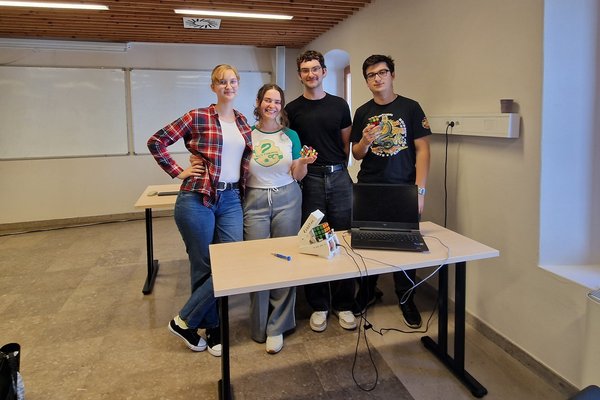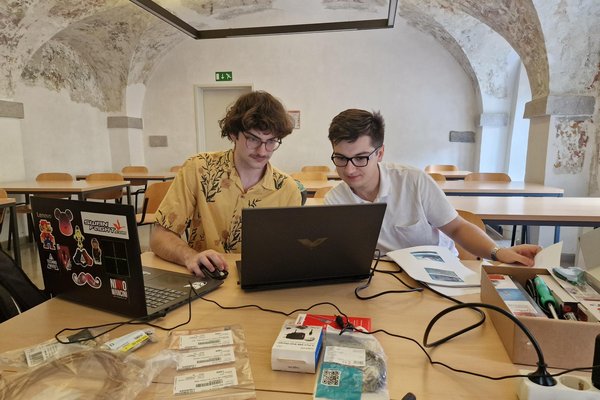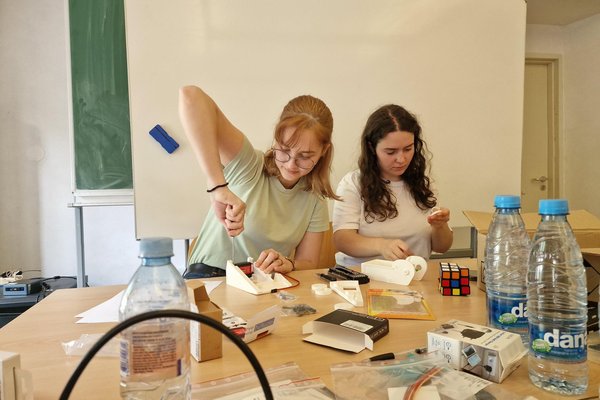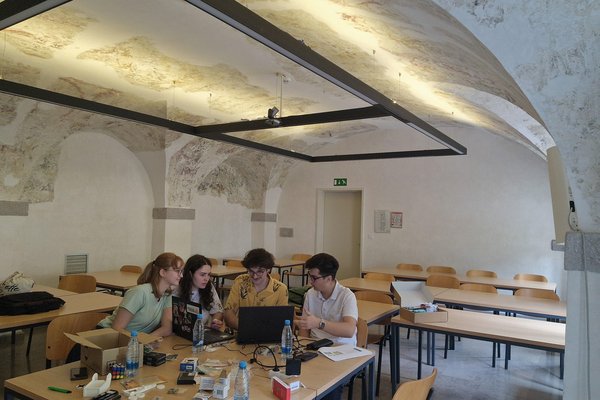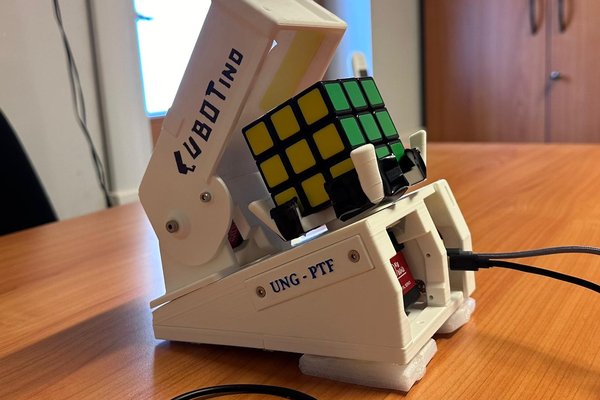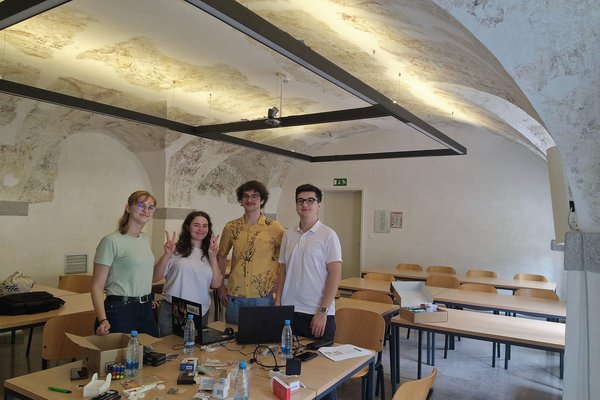The CUBOT project
From Concept to Creation: The CUBOT Project Journey
The CUBOT project began with a shared enthusiasm for Robotics and Engineering among our team members: Boban, Damjan, Eva, and Natalija. We were excited about creating a small, 3D-printed robot that could solve Rubik's Cubes.
This project was appealing because it let us apply what we learned in class to a real-life problem. While we expected some challenges with technology and teamwork, the actual experience was better than we imagined.
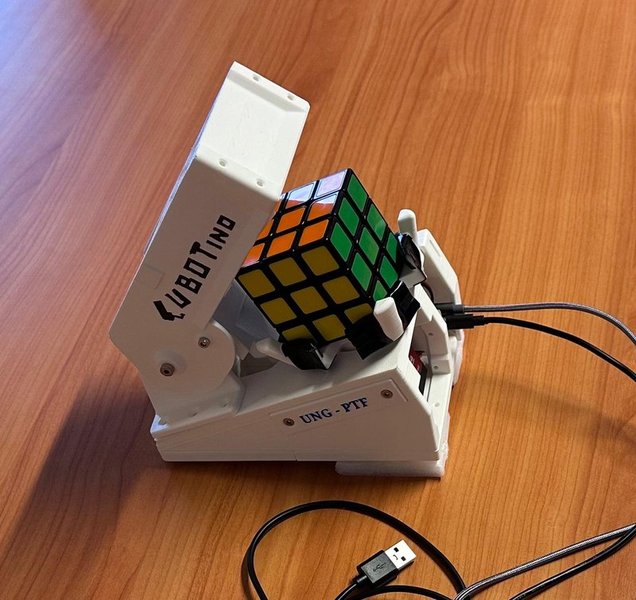
The project started with planning and brainstorming sessions. We researched existing Rubik's Cube solvers and identified the key components we would need. We decided on a fully 3D-printed design to keep costs low and leverage the resources at the University of Nova Gorica. From finding the right materials to fixing problems with the 3D printer, each step required us to think creatively and work together. One of the first tasks was sourcing materials. This involved research and comparison shopping to find the best suppliers for the components we needed. We ordered parts from several vendors, including IC-Elektronika, Conrad, and Amazon. Ensuring we had the right materials in time required careful coordination and planning. Once we had all the materials, we moved on to the design and 3D printing phase. This was one of the most challenging parts of the project. We faced issues with the 3D printer, including calibration problems and failed prints. However, we persevered, tweaking our designs and settings until we achieved the desired results. This phase taught us a lot about patience and attention to detail.
Assembling the robot was another significant milestone. This involved putting together the 3D-printed parts, wiring the electronics, and setting up the software.
Each team member brought unique skills to the table, and we worked together to ensure everything fit and functioned as intended. The process was both exciting and challenging, as we had to solve several issues on the fly.
Throughout the project, we encountered several setbacks. Technical issues with the 3D printer were a recurring challenge, but we also had to deal with changes in our team dynamics. Despite these setbacks, Assist. Prof. Dr. Ahmad Hosseini, our coordinator, and Prof. Dr. Imre Cikajlo, our dean, supported us all the way.
The project tested our technical abilities and strengthened our teamwork and problem-solving skills. We dealt with challenges like getting materials, adjusting and testing the robot, and assembling it. These tasks helped us communicate better and support each other. Looking back on the CUBOT project, it was a big learning experience. It renewed our interest in engineering and taught us a lot about managing projects. As we look ahead, we are excited to apply what we've learned and continue exploring new challenges in robotics and beyond.
(students of Bachelor's degree study programme Engineering and Management, June 2024)

